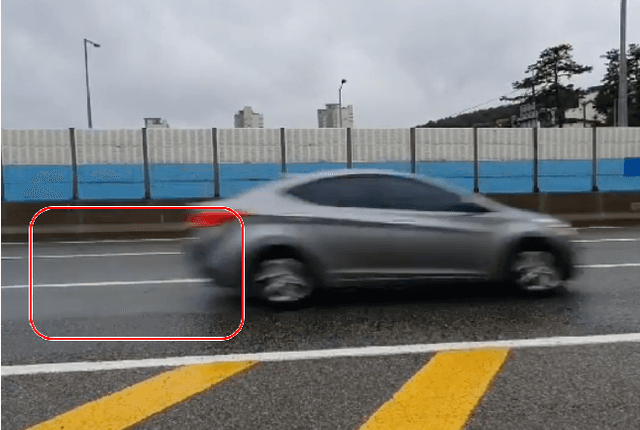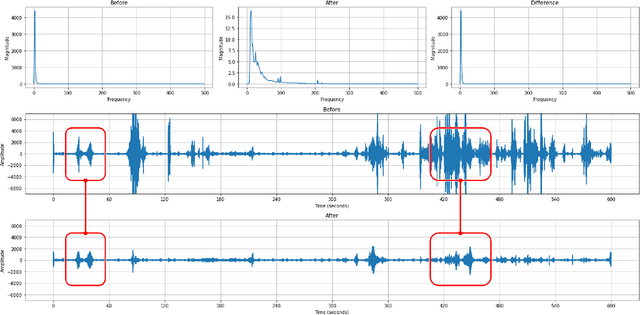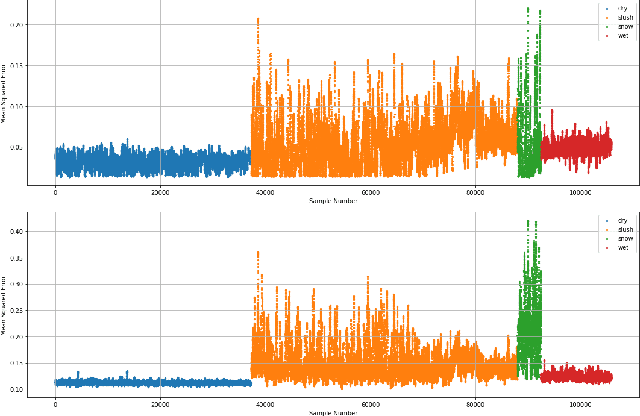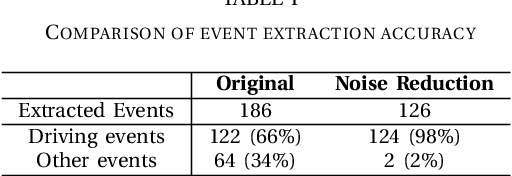JoonSung Lee
Noise Reduction and Driving Event Extraction Method for Performance Improvement on Driving Noise-based Surface Anomaly Detection
Dec 14, 2021



Abstract:Foreign substances on the road surface, such as rainwater or black ice, reduce the friction between the tire and the surface. The above situation will reduce the braking performance and make difficult to control the vehicle body posture. In that case, there is a possibility of property damage at least. In the worst case, personal damage will be occured. To avoid this problem, a road anomaly detection model is proposed based on vehicle driving noise. However, the prior proposal does not consider the extra noise, mixed with driving noise, and skipping calculations for moments without vehicle driving. In this paper, we propose a simple driving event extraction method and noise reduction method for improving computational efficiency and anomaly detection performance.
Anomaly Detection Based on Multiple-Hypothesis Autoencoder
Jul 07, 2021


Abstract:Recently Autoencoder(AE) based models are widely used in the field of anomaly detection. A model trained with normal data generates a larger restoration error for abnormal data. Whether or not abnormal data is determined by observing the restoration error. It takes a lot of cost and time to obtain abnormal data in the industrial field. Therefore the model trains only normal data and detects abnormal data in the inference phase. However, the restoration area for the input data of AE is limited in the latent space. To solve this problem, we propose Multiple-hypothesis Autoencoder(MH-AE) model composed of several decoders. MH-AE model increases the restoration area through contention between decoders. The proposed method shows that the anomaly detection performance is improved compared to the traditional AE for various input datasets.
Self-Weighted Ensemble Method to Adjust the Influence of Individual Models based on Reliability
Apr 09, 2021



Abstract:Image classification technology and performance based on Deep Learning have already achieved high standards. Nevertheless, many efforts have conducted to improve the stability of classification via ensembling. However, the existing ensemble method has a limitation in that it requires extra effort including time consumption to find the weight for each model output. In this paper, we propose a simple but improved ensemble method, naming with Self-Weighted Ensemble (SWE), that places the weight of each model via its verification reliability. The proposed ensemble method, SWE, reduces overall efforts for constructing a classification system with varied classifiers. The performance using SWE is 0.033% higher than the conventional ensemble method. Also, the percent of performance superiority to the previous model is up to 73.333% (ratio of 8:22).
 Add to Chrome
Add to Chrome Add to Firefox
Add to Firefox Add to Edge
Add to Edge